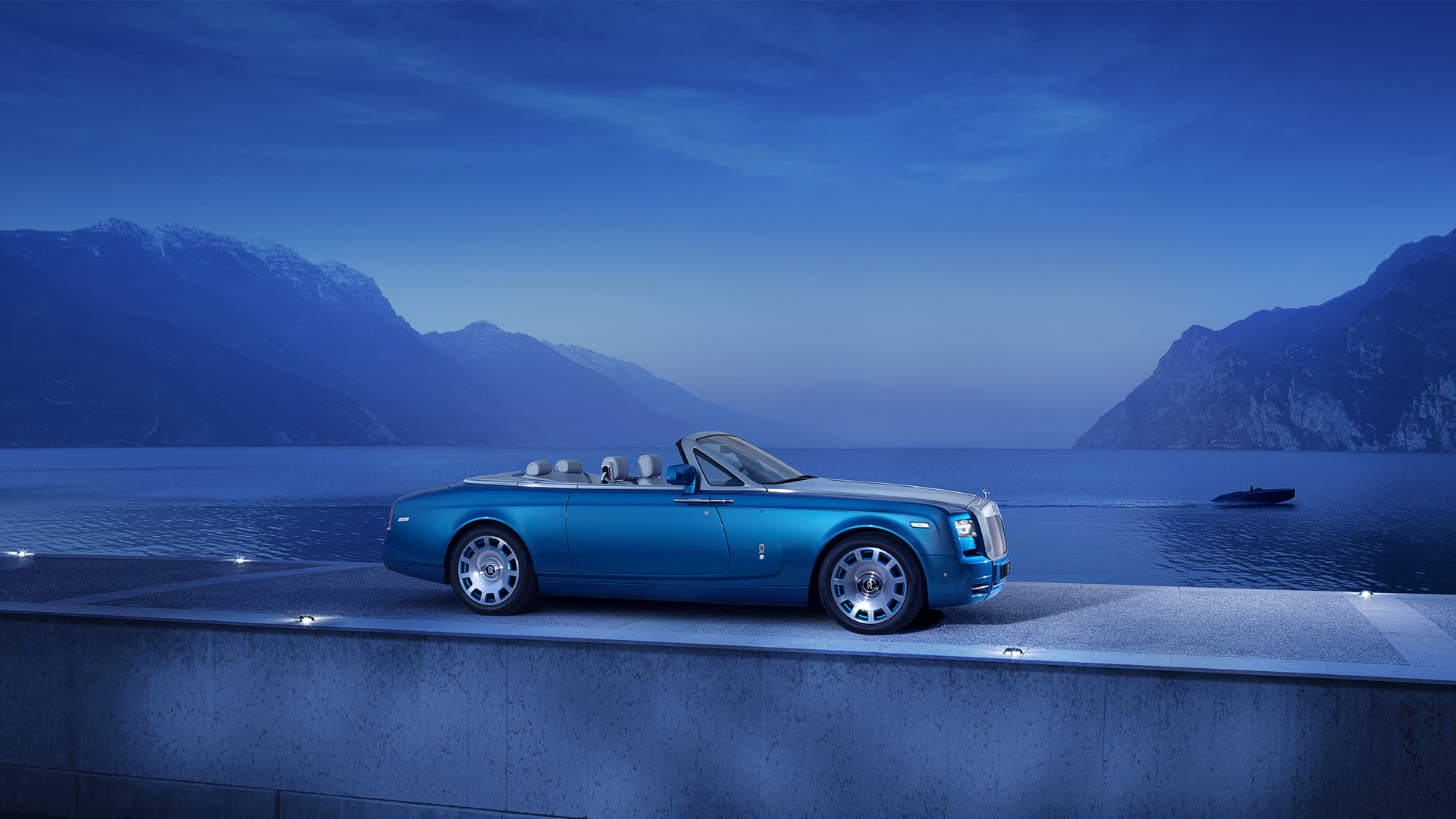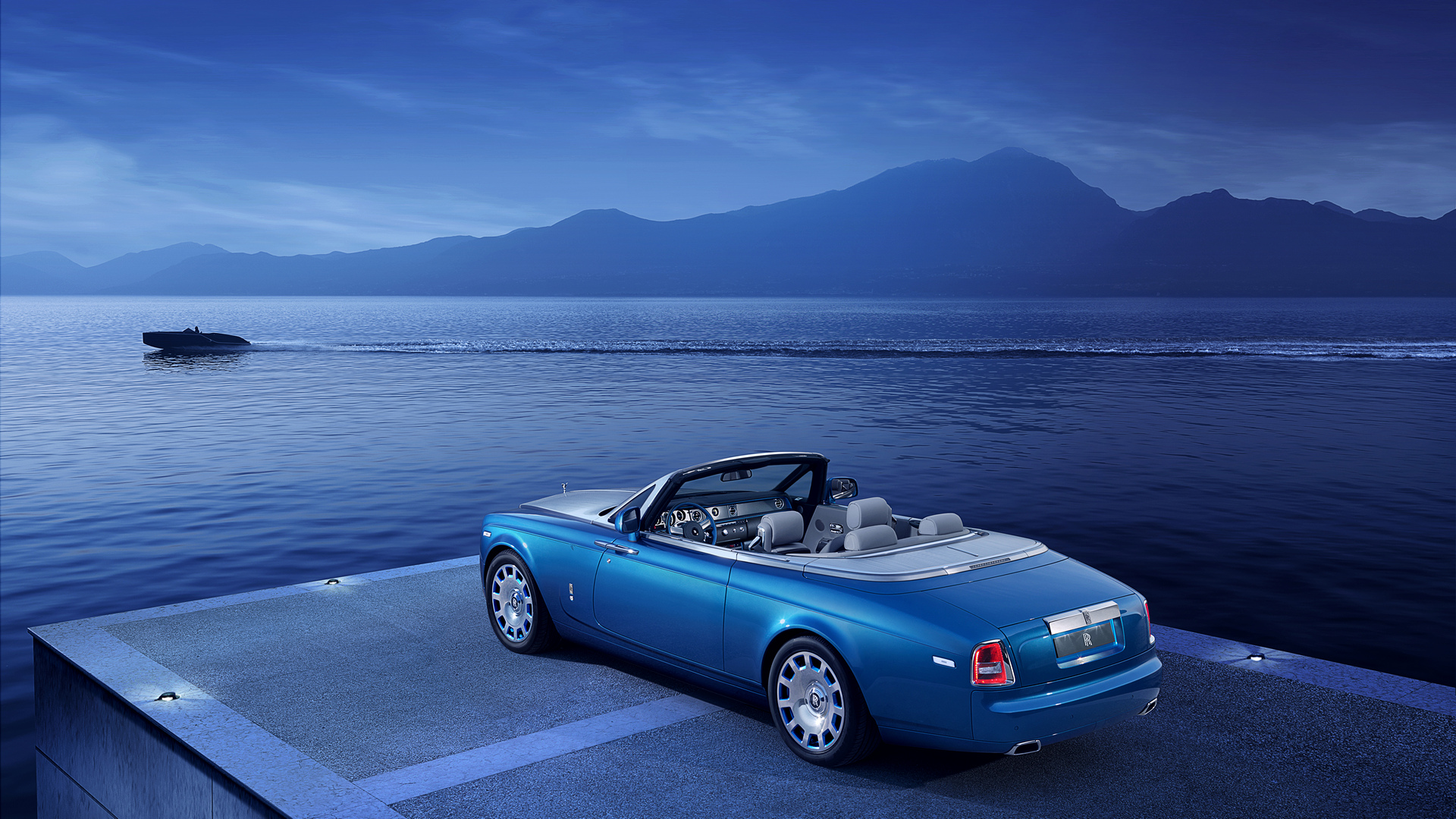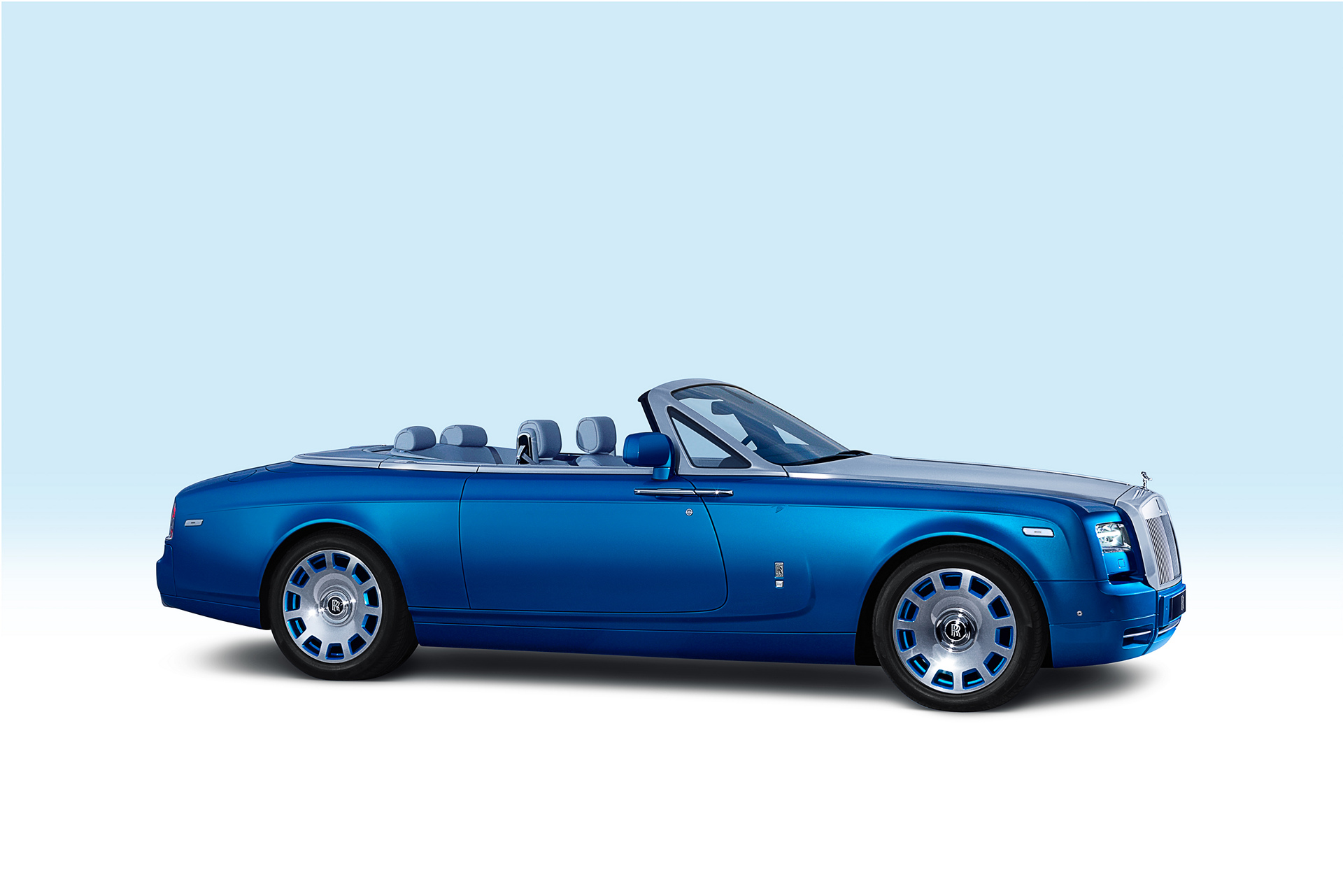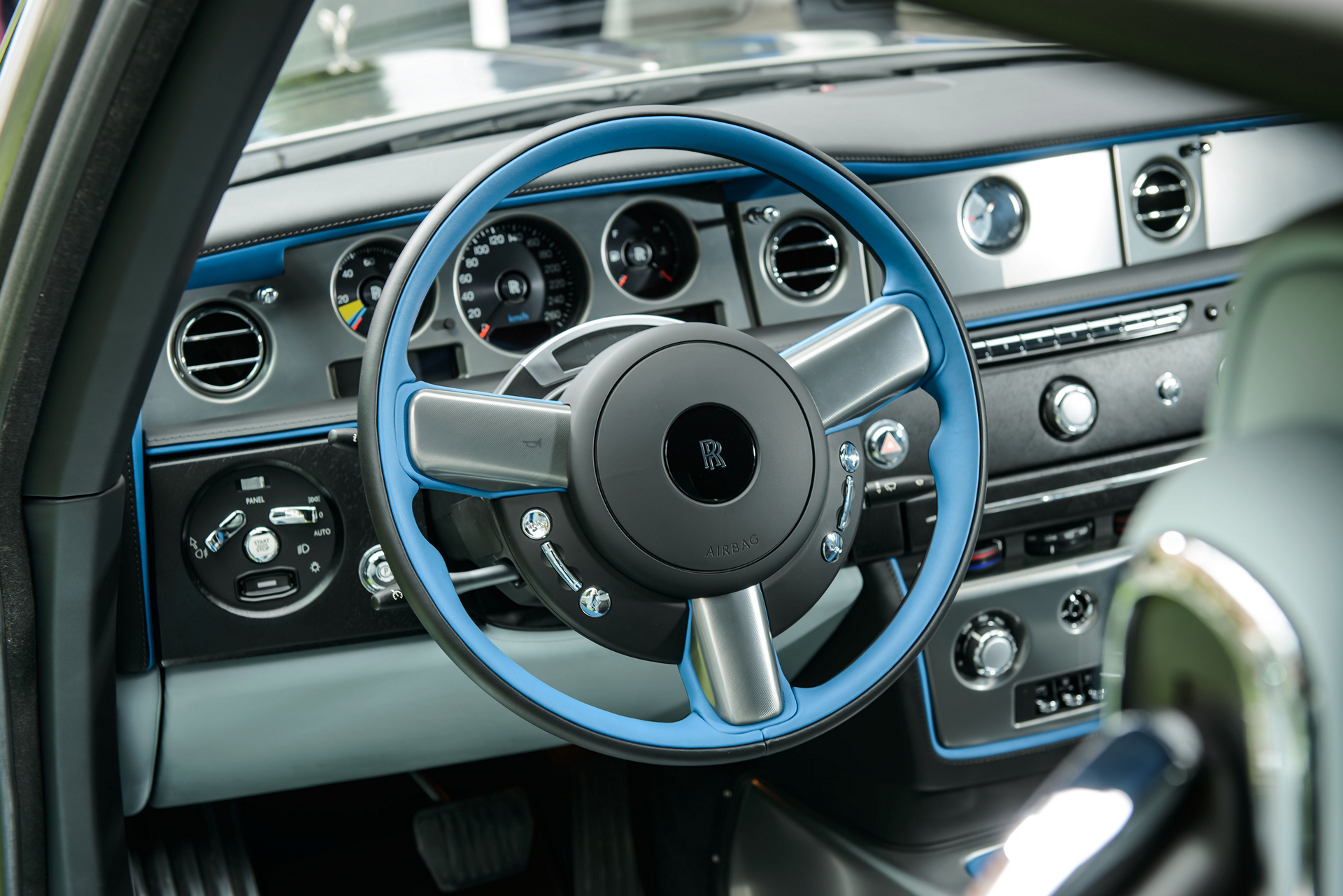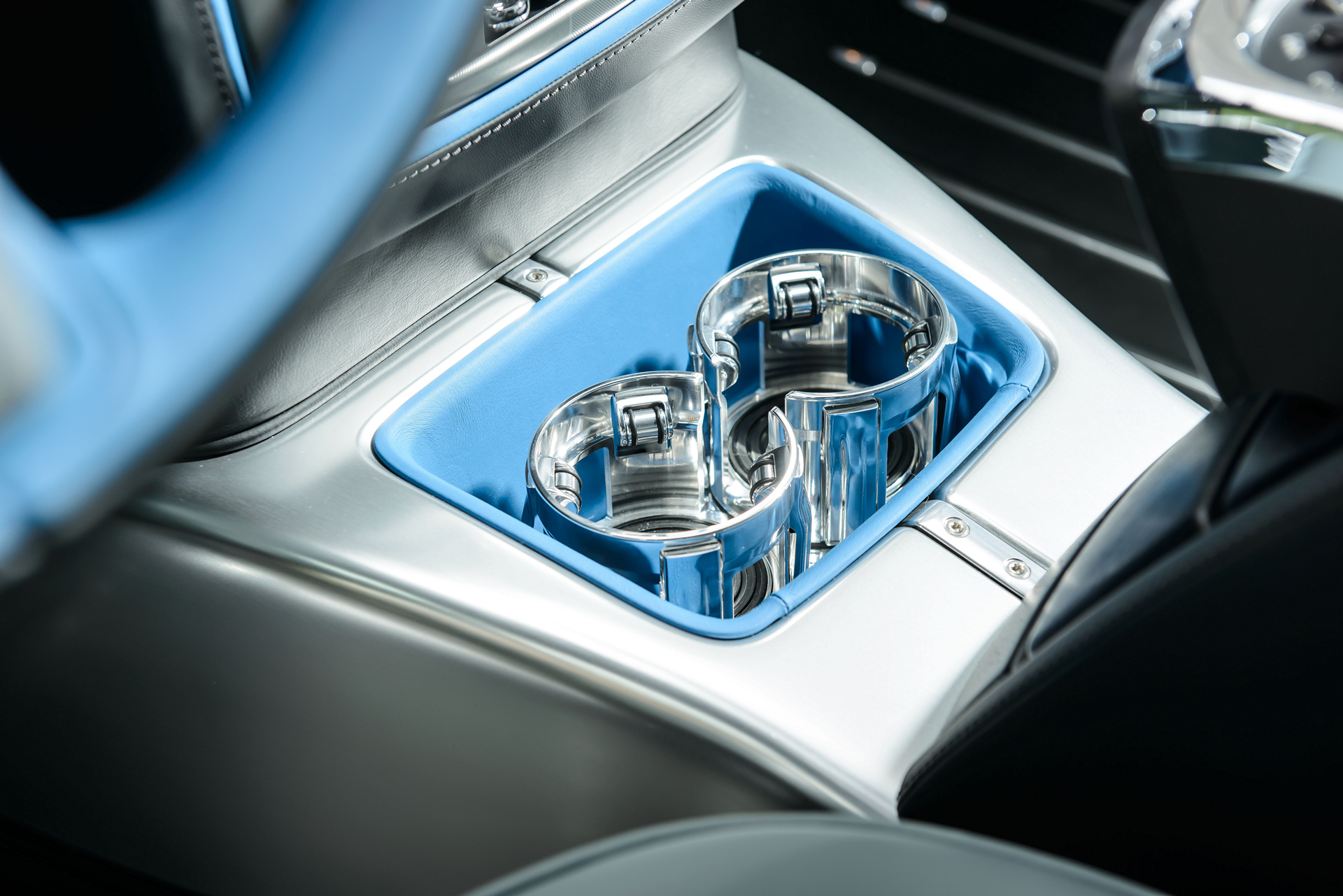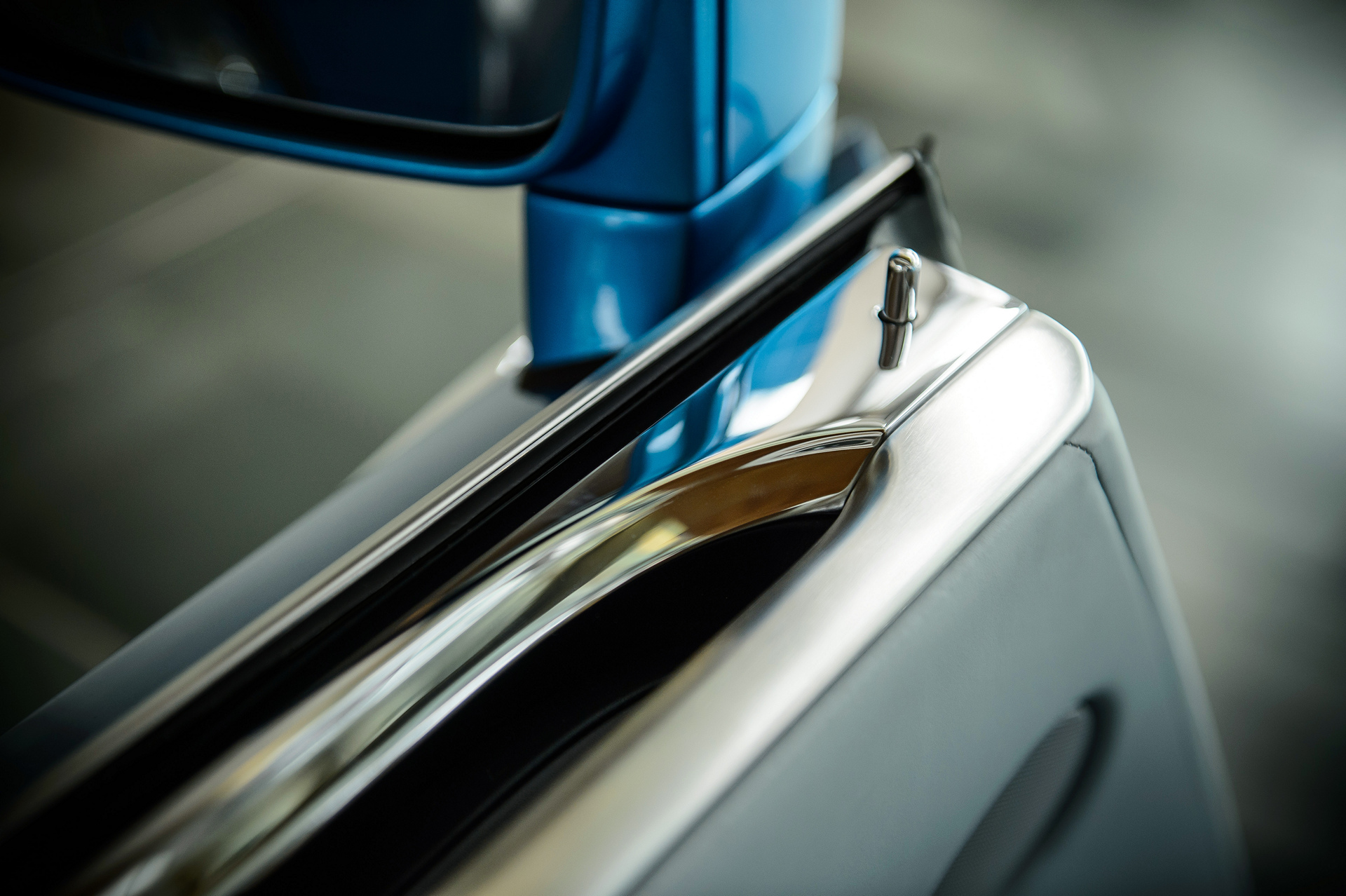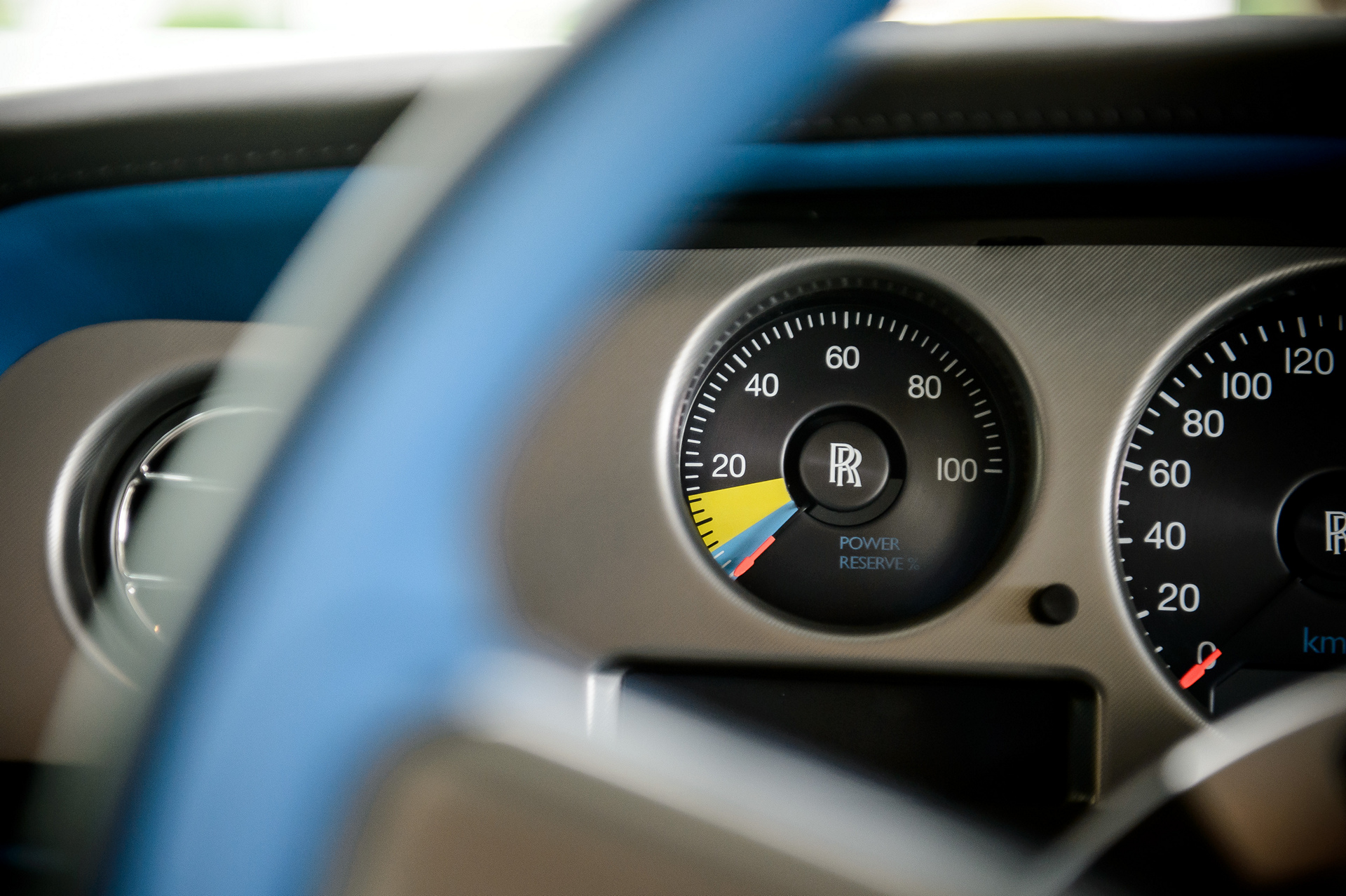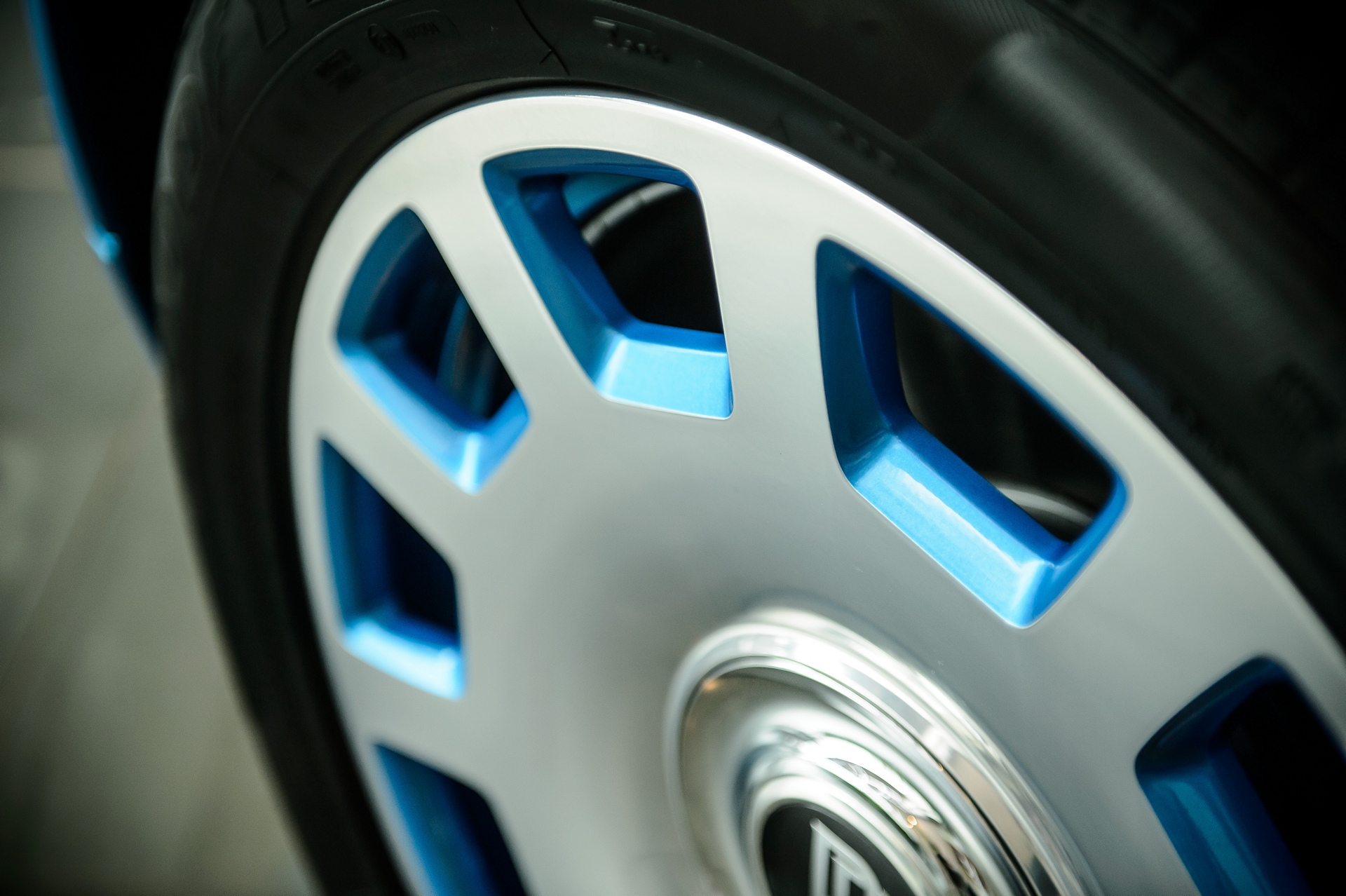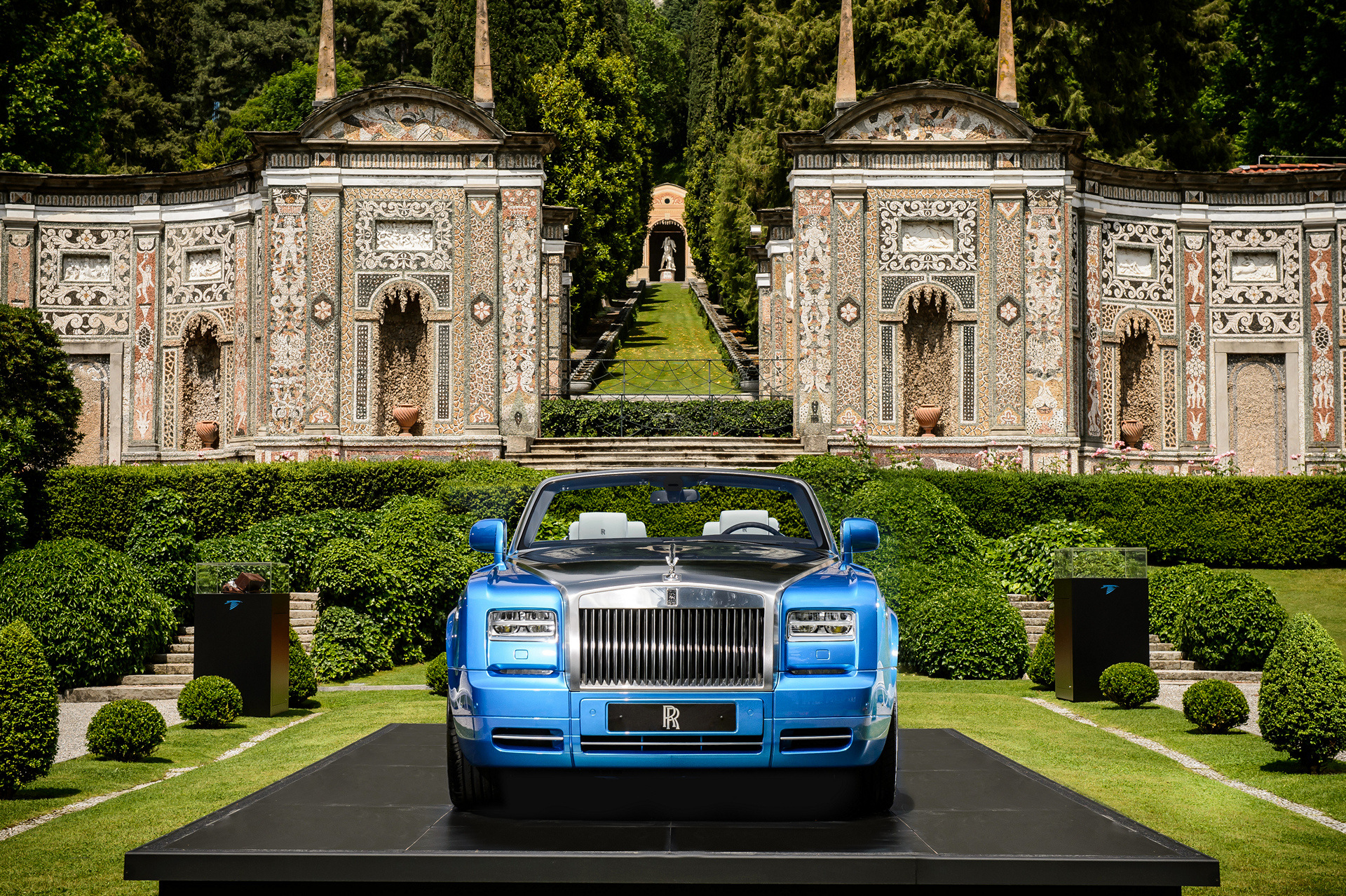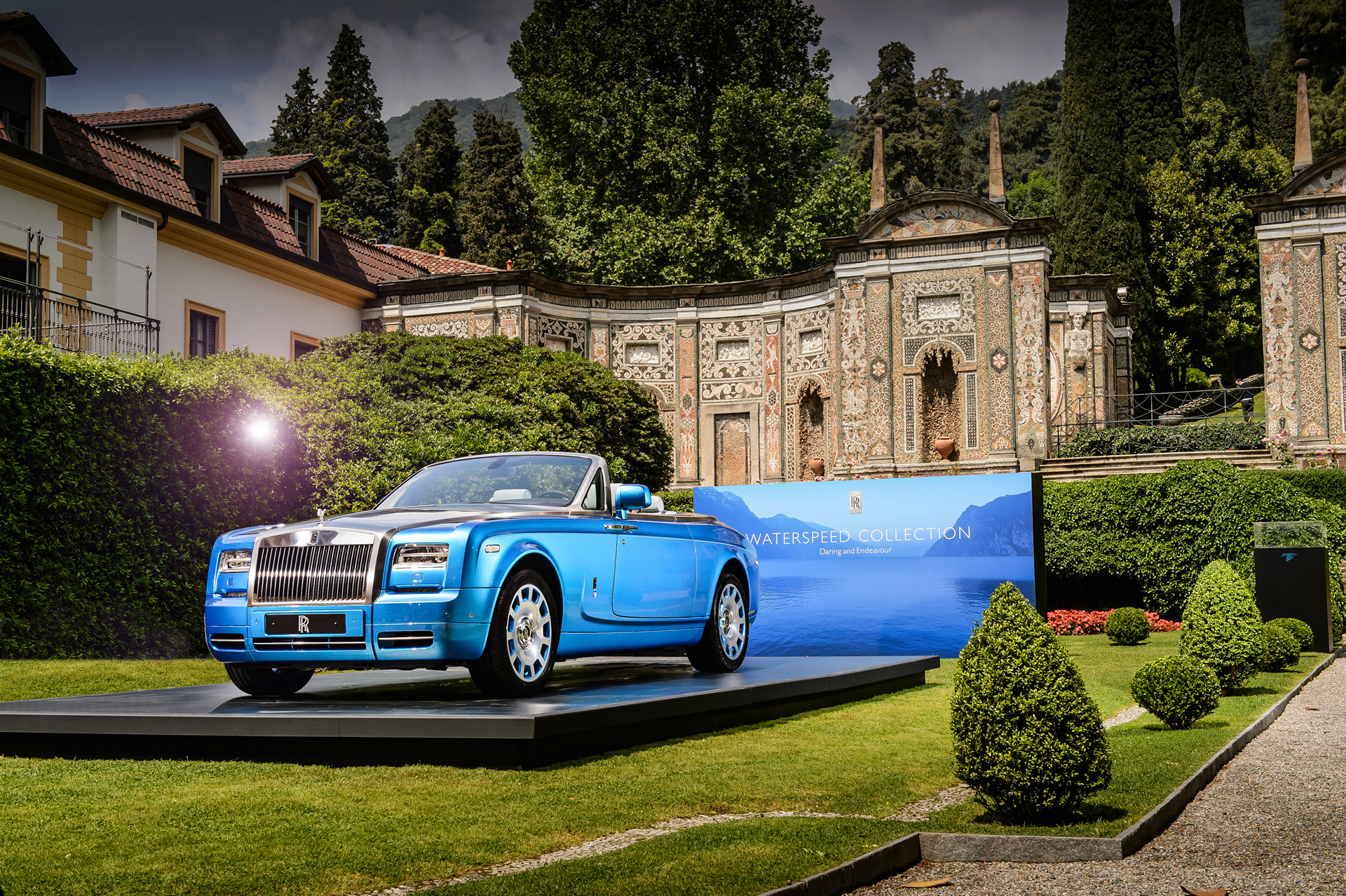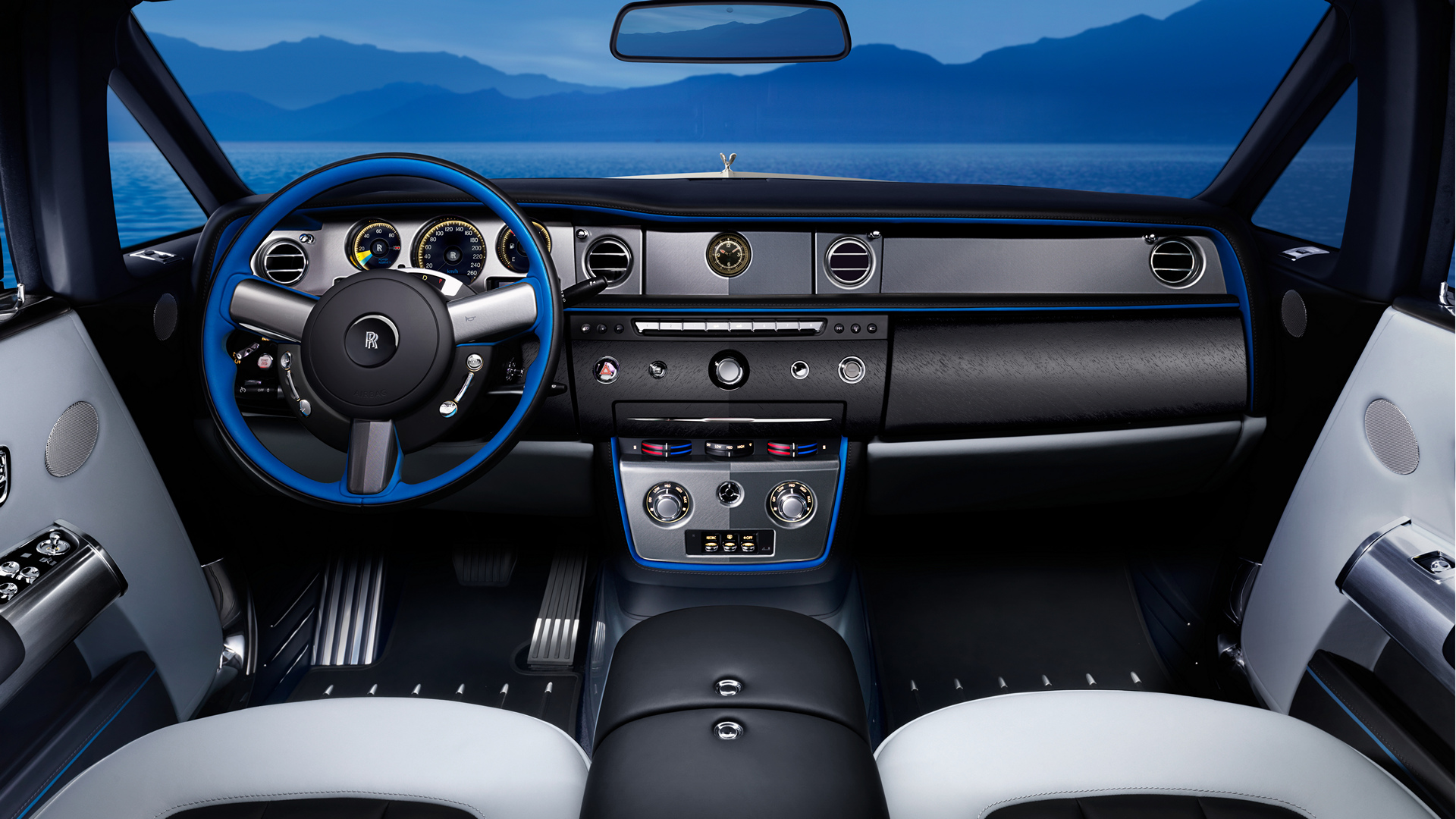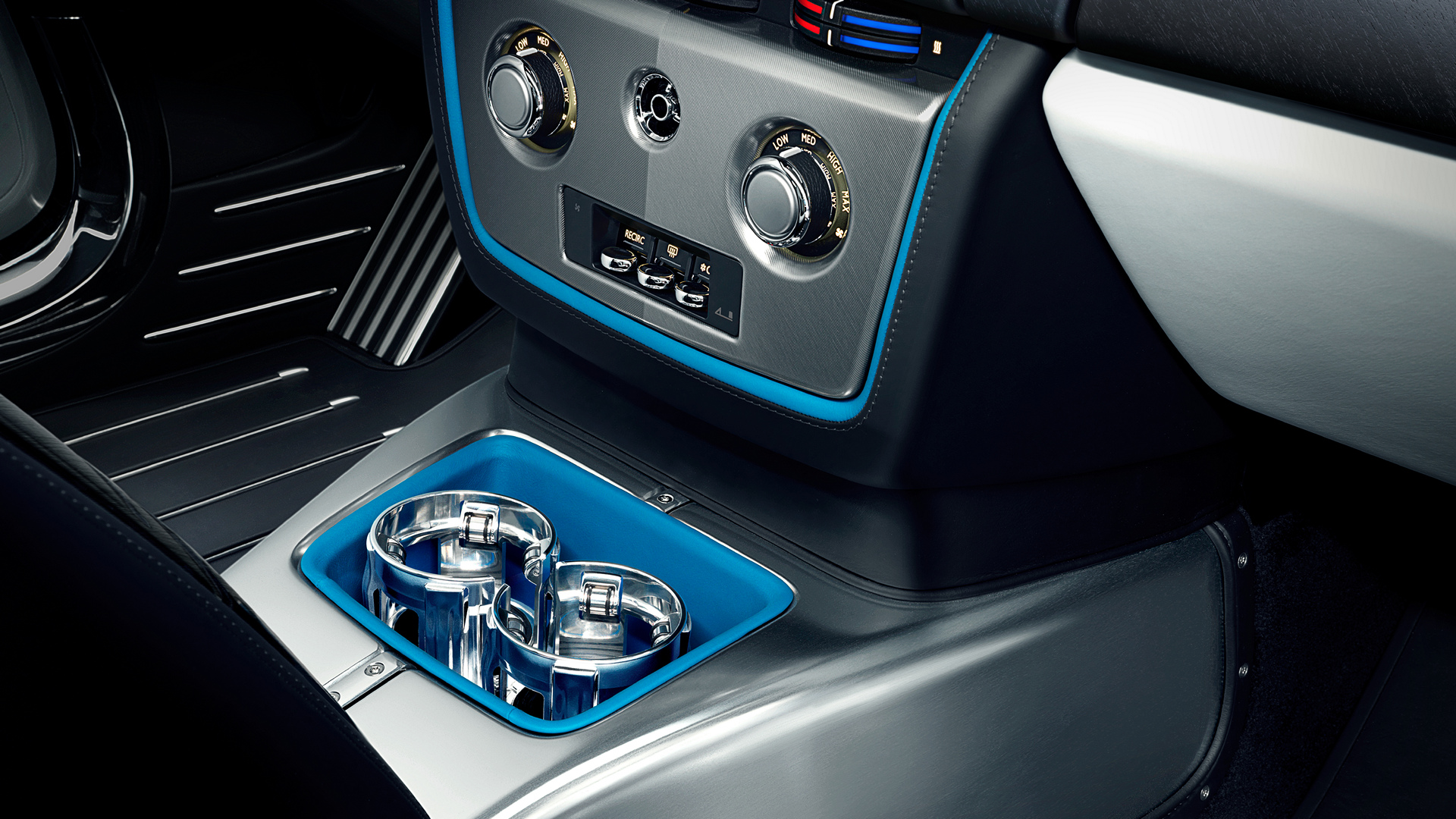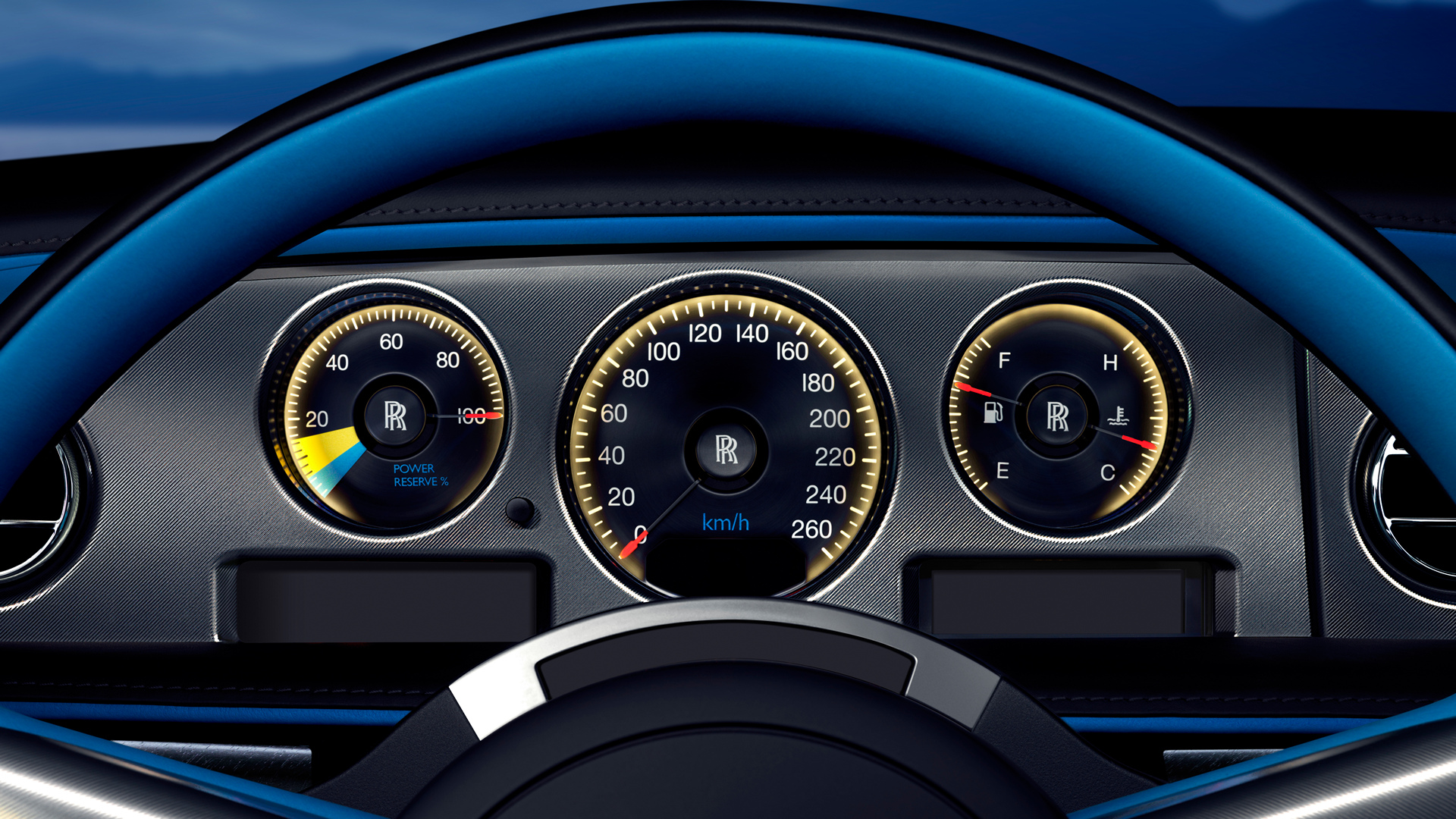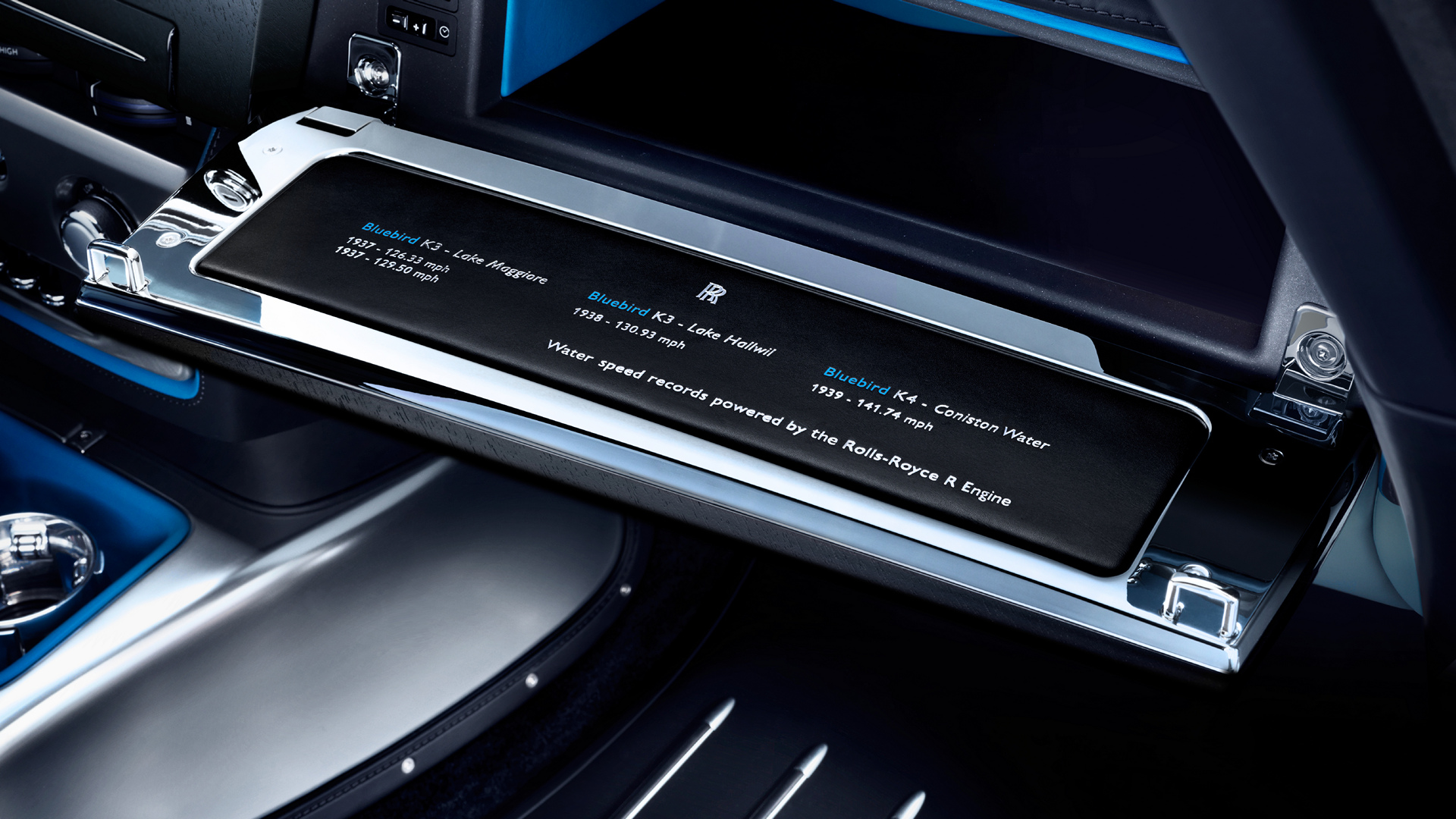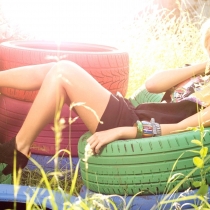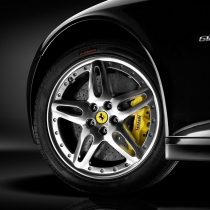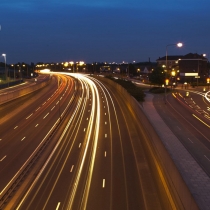On the morning of 1 September 1937, at the height of the battle between the United States and Great Britain to be the fastest nation on water, British speed record pioneer Sir Malcolm Campbell headed out onto the calm blue waters of Lake Maggiore on the Swiss-Italian frontier.
Pointing the nose of his Bluebird K3 hydroplane boat south, powered by Rolls-Royce’s R-engine, he established a new water-speed record of 126.32mph. The following day he went one better, piloting his craft to 129.5mph, emphatically breaking the United States’ five-year stranglehold on the world water-speed record. Campbell’s momentous achievement captured the world’s attention and reaffirmed Rolls-Royce R-engines’ record-breaking superiority after triumphs on land and in the air.
Celebrating this incredible act of British ‘Derring-Do’, Rolls-Royce Motor Cars Bespoke department has created the Waterspeed Collection, 35 specially designed Phantom Drophead Coupés. Echoing the cutting-edge technology employed in the construction of the K3, only the finest contemporary materials have been used to furnish the Waterspeed Collection. Brushed steel perfectly complements an exclusively developed Maggiore Blue colour scheme. Perfectly book-matched open-grain Abachi wood veneer evokes the sense of a boat effortlessly gliding through water at pace, whilst the exterior coachline and laser etchings inside the car bring Campbell’s ‘Bluebird’ motif back to life.
“Sir Malcolm Campbell’s successful pursuit of world-speed records on land and water were the result of his commitment to the most exacting standards of British design and engineering excellence,” comments Torsten Müller-Ötvös, Chief Executive Officer, Rolls-Royce Motor Cars.
“Such attributes are hallmarks of every Rolls-Royce motor car, ensuring the marque’s position at the pinnacle of super-luxury manufacturing. This special Collection serves to display the breadth of Bespoke personalisation available to every Rolls-Royce customer.”
The History of Sir Malcolm Campbell’s speed records
Sir Malcolm Campbell is the legend at the very core of the British love affair with speed. A journalist and a motor racing obsessive, he had already won three consecutive London to Land End Trials motorbike races by the age of 23. Two years later in 1910 he moved onto four wheels, racing cars at the now famous Brooklands track in Surrey, England. By 1928 he had won two consecutive Grand Prix de Boulogne in France.
Around the time that he began racing cars at Brooklands, he went to see a play at the Haymarket Theatre in London’s West End. The play, written by Belgian playwright Maurice Maeterlinck, made such an impression on Campbell that on the way home from the theatre he is reputed to have woken up the local ironmonger, bought all the paint he had in stock and painted his race car ahead of the next day’s race. He went on to win his first ever race and the colour adorned every vehicle he and his family would race forever more. The colour was blue and the play was called ‘The Bluebird’. A legend was born.
Not satisfied with competing in and winning races; Campbell had his eye on a bigger prize. He wanted to be the fastest man in the world. His record-breaking endeavours began in the early 1920’s on land. He broke the land-speed record for the first time in 1924 on Pendine Sands in South Wales setting a speed of 146.16mph in a 350HP V12 Sunbeam built for him by the Sunbeam company. In 1927 he smashed this record by covering a flying mile at 174.224mph in the Napier-Campbell Bluebird, again on Pendine Sands. But it wasn’t until his Bluebird car was modified to accommodate the 2,300bhp 36.5-litre V12 Rolls-Royce R37 aero engine that he would put the land speed record out of reach of others. On 3 September 1935, Sir Malcolm Campbell broke the 300mph barrier on the Bonneville Salt Flats in Utah setting a speed of 301.129mph at the wheel of Bluebird. He was now the fastest man on land.
But plans were already afoot in the Campbell camp to wrest another record away from the competition. The fastest person on water at the time was Garfield ‘Gar’ Arthur Wood, an American inventor, entrepreneur, motorboat builder and racer whose most recent record of 124.86mph had been set on 20 September 1932. This record would stand for almost five years to the day.
It was in 1935, soon after setting the land-speed record that Sir Malcolm decided to make an attempt on that five year old world water-speed record. It was a matter of national pride to him. On the eve of the Second World War he wanted to secure the record for Great Britain.
He commissioned Saunders Roe on the Isle of Wight to build a craft capable of breaking the record. The Rolls-Royce R37 engine from his land-speed record car was transferred to the craft and drove a dog type clutch up to a V-drive gearbox mounted at the front of the boat with a step up ratio of 1 engine revolution to 3 prop revolutions. After 18 months of hard work and innovation, the boat was ready for her first trials and was christened Bluebird by Lady Campbell and given her international race number KZ30. This was later shortened to K3.
The first trials on Loch Lomond in Scotland were hampered by poor water surface conditions. However, Campbell and the team achieved a speed of 90mph and this convinced him that the record could be broken if only they could find a suitable span of water.
One of Campbell’s mechanics, Leo Villa, was of Italian decent. He knew the lakes in Northern Italy were particularly calm and were not affected by cross winds because of the steep slopes that surround them. He was sent to reconnoitre and came back to report that Lake Maggiore on the Swiss-Italian border was the perfect candidate. K3 and the team were soon on their way to the Swiss side of Maggiore.
And so on the morning of 1 September 1937, Sir Malcolm headed out onto Lake Maggiore in K3 and took her to a new world water-speed record of 126.33mph, almost five years to the day since the last record had been set. Bluebird performed very well, although Campbell said she was a real handful and difficult to handle. However he was sure K3 could go faster and the next day he ran again and powered to a new record of 129.5mph. Sir Malcolm Campbell was now the fastest man on land and water. He and his team returned triumphant to England.
As a postscript to this story, the team went to Switzerland again in July 1938 to try and raise the record as Campbell felt the margin between ‘Gar’ Woods old record and his own was very thin. On a smaller quieter lake close to the German boarder called Halwill, a modified K3 with Campbell at the wheel raised the record again to 130.93mph.
Following this record it was decided that K3 had reached her limits, but the Rolls-Royce R engine could do more. Hence K3’s successor K4 was born and the Rolls-Royce R-engine helped Campbell set his final water-speed record of 141.74mph, fittingly but somewhat ominously on Coniston Water, back in Great Britain on 19 August 1939.
The Rolls-Royce Waterspeed Collection
“I think Charles Rolls would have loved this vehicle. He would have been fully in tune with Sir Malcolm Campbell’s spirit of endeavour.” – Giles Taylor, Director of Design, Rolls-Royce Motor Cars.
The power of nature and the power created by man lie at the heart of Rolls-Royce Motor Car’s inspiration for Waterspeed. The calm surface and blue waters of the 42 mile long Lake Maggiore – the second largest lake in Italy – belie the power that created this Alpine fissure, whilst the legendary 2,300bhp 36.5-litre V12 Rolls-Royce R aero engine that rent its surface as Sir Malcolm set his water-speed record were the designer’s key influences. The final piece of the puzzle was the original concept for the Phantom Drophead Coupé – to “bring the outside in” by creating a social space enabling occupants to embrace the elements using sumptuous and relevant materials. Waterspeed is the most radical interpretation of this approach to date.
The Maggiore Blue colour scheme, specially created by Rolls-Royce’s Bespoke team, flows like water over all the surfaces of Waterspeed, outside and in. It adorns the boat-like lines of the Phantom Drophead Coupé’s exterior – the closest of any car design to the classic Riva speedboats influenced by Pietro Riva’s earliest designs, themselves created in the Italian Lakes – and extends to the blue highlights on the 21-inch alloy wheels. A new imagining of a Bluebird logo has also been designed by the Bespoke team at Goodwood and becomes part of the coachline that adorns the sides of Waterspeed in a contrasting blue.
Maggiore Blue also permeates the interior of Waterspeed. Rolls-Royce Motor Car’s first ever two-tone steering wheel is enrobed in the blueleather, as are highlights around the cabin such as the piping on the seats, dashboard top, cup holder surround and door accents.
In addition, Maggiore Blue also brings a new twist to the famous power reserve gauge, another of those trademark Rolls-Royce design cues that raises a smile as it casually reveals the enormous power potential at a driver’s disposal. Blue accents on Waterspeed’s power reserve gauge invite the driver to go ‘into the blue’ as Sir Malcolm Campbell did many times in pursuit of his world speed records.
But this unique colour treatment also creates the pièce de la résistance of Waterspeed, as it envelops its 453bhp 6.75-litre V12 engine – a first for Rolls-Royce. This echoes how Campbell’s engineers always painted Bluebird’s legendary 2,300bhp 36.5-litre V12 Rolls-Royce R aero engine that smashed all those records on air, land and, of course, water.
Contrasting the water-like flow of this vivid blue hue around the car is the viscous ebb of metal surfaces. Brushed steel bonnet, windscreen A-frame, cockpit surround and rear deck, as well as interior features, evoke both the sometimes steel grey skies over Lake Maggiore experienced by Campbell’s crew in those September days on the eve of war, but also the shocking modernity a craft such as K3 brought to the early 20th century.
“Steel was itself used extensively on these groundbreaking craft so we wanted metal to be the dominant application,” comments Alex Innes, Bespoke Designer at Rolls-Royce Motor Cars.
Inside Phantom Drophead Coupé Waterspeed, the aluminium dashboard fascia, laser-etched door armrest cappings, aluminium transmission tunnel and centre console, ‘Windchill Grey’ leather upholstery and polished aluminium cupholders evoke the modernity of this endeavour and further highlight the capabilities of the Bespoke team at the Home of Rolls-Royce in Goodwood. Finally, bookmatched Abachi wood veneer beneath the fascia on the dashboard evokes the sense of a boat effortlessly gliding through water at pace.
Not content with simply evoking Campbell’s achievements through colour and materials, Rolls-Royce’s Bespoke team has, in the grand tradition of Sir Henry Royce and indeed Sir Malcolm Campbell, gone many extra miles.
For example, the steel rear decking for which each piece of material is individually beaten by hand for 70 hours and then hand-brushed for a further 10, until perfect for Waterspeed.
Polished aluminium cup holders – in themselves a work of automotive art – the specially developed clock that features the infinity sign that adorned Campbell’s K3 and K4 craft and, of course, the inside of the glove compartment lid that features all four of Campbell’s water-speed records de-bossed in the leather lining, all highlight the extra lengths Rolls-Royce has gone to celebrate Sir Malcolm’s great act of daring.
Furthermore, the steering wheel took direct inspiration from K3 and K4, which both had blue steering wheels. It was key to the Bespoke team that this first tactile experience of Waterspeed immediately evoked the world of Sir Malcolm Campbell for the owner.
“In the same way as the Bluebird team used the most modern materials available to them, we’ve done the same thing,” comments Richard Collar, Head of Bespoke Marketing at Rolls-Royce Motor Cars.
Another touch-point that the Bespoke team took great pains over was the laser-engraved Bluebird motifs in the armrests of Waterspeed. A new Bluebird image for a new generation, each one was machined from a single billet of aluminium.
“We focused huge design effort on getting the Bluebird engraving absolutely perfect to give it the right level of tactile appreciation,” continues Collar.
The perfect platform for Waterspeed
Phantom Drophead Coupé lends itself as the perfect platform for such a tribute to Sir Malcolm Campbell’s water-speed records. As originally conceived by the Rolls-Royce engineering team, an advanced aluminium spaceframe that is strong, lightweight and as rigid as a Formula 1 car sits at the Phantom Drophead Coupé’s core, serving as the foundation for the car’s extraordinary driving prowess.
Epitomising the Rolls-Royce marriage of cutting-edge technology with fine craftsmanship, each spaceframe is entirely hand-welded, then finished as if it were a precision instrument. Every morning, skilled welders perform a 300mm test to check for atmospheric effects on the material with which they will work. More than 200 box sections of cast aluminium extrusion are then formed to create the frame, which is checked by laser for accuracy to within a millimetre. Finally, the largest computer-guided machining platform in the auto industry sets to work on the complete structure, milling critical points with pinpoint precision.
Waterspeed’s exterior lines echo the timeless styling of the great Rolls-Royce cars: a long bonnet, large-diameter wheels, short front and long rear overhangs and the quintessential dynamic line descending along its flanks. Inside, the design emphasises the airy openness of top-down motoring, embracing the elements and creating a stunning, social environment.
Phantom Drophead Coupé has been carefully crafted to be aesthetically pleasing, yet practical too. It offers owners an unparalleled convertible experience, combining compelling driveability with exceptional engineering, technology and design – hand crafted from the finest materials to an exceptional level of quality.
The hood is the largest of any modern convertible. Its acoustic insulation is exemplary, with five layers of insulation material between occupants and the outside world. Lined with a cashmere blend, the structure is more like a bespoke suit than a traditional fabric roof. Rolls-Royce was keen to use a fabric roof rather than a folding hard-top for many reasons, not least aesthetics and tradition.
Inside Phantom Drophead Coupé
The interior concept revolves around the idea of an indoor/outdoor space; an all-weather passenger compartment that combines the practicality required for convertible motoring with the sumptuous elegance expected of Rolls-Royce. When designing Phantom Drophead Coupé, Rolls-Royce designers visited a boatyard in Southampton where one of the famous 1930s America’s Cup J-class yachts was being restored. They were struck by the variety and uses of different materials throughout, as well as its tremendous sense of purposeful elegance.
Phantom Drophead Coupé has been created as a car in which to enjoy the elements. The all-weather surfaces of the interior have been designed to take everything that nature can throw at them. To this end, a number of notable features can be seen throughout the interior. For example, in place of traditional floor mats, wholly more practical saddle leather and metal mats are used on Waterspeed.
The driving position is set deliberately high to give a commanding view of the road over the long bonnet, and the curved rear lounge seats offer an intimate, social environment for passengers. Rear legroom is excellent and marks the car out as a true four-seater.
Driving
The Phantom Drophead Coupé’s advanced aluminium spaceframe is at the heart of its refined, dynamic driving experience. Lightweight and exceptionally strong, it impacts positively on ride, comfort and safety. Its inherent rigidity is essential in isolating vibration and maintaining the hushed interior calm associated with the marque.
A lower centre of gravity, combined with the reduced wheelbase and incredibly stiff body, produces a ride that is refined, yet agile. Feedback from the wheels is informative but not intrusive. Imperfect road surfaces go unnoticed while feel through the steering wheel inspires confidence. New spring dampers and lighter anti-roll bars have been engineered to maintain comfort without loss of agility, whilst self-levelling air struts continuously adjust for increased loading in harder cornering, giving drivers the ability to place the car through turns with absolute precision.
Ample power is supplied by a 6.75-litre, naturally aspirated, V12 engine. Developing 453bhp / 338kW and 720Nm / 531lb ft of torque at 3500rpm, delivery is smooth and abundant. Furthermore, with 75 per cent of engine power available at just 1000rpm, progress from a standstill is effortless and remains so throughout the rev range.
The powerful V12 will accelerate Phantom Drophead Coupé to 60mph in under six seconds and on to a limited top speed of 149 mph / 240 km/h. It stops in equally impressive fashion, using 374mm / 14.7in ventilated disc brakes at the front and 370mm / 14.5in at the rear.
Craftsmanship
Craftsmanship is a hallmark of Rolls-Royce. From the traditional wood and leather workshop skills to the complex welding of the aluminium spaceframe, a 21st century Rolls-Royce is a blend of hand crafted expertise and high-tech materials and techniques.
With more than 400 hours invested in each car, not including the time taken to build the engine, nearly right is never acceptable. The maxim of company founder Sir Henry Royce still resonates around the Home of Rolls-Royce at Goodwood today:
“Strive for perfection in everything you do.” From day-to-day production cars to the often complex Bespoke requests, Rolls-Royce has a skilled team adept at meeting the challenges of crafting the finest cars for the most discerning customers.
In the case of Waterspeed, getting exactly the same look for the brushed steel on the grille surround, the bonnet, the rear deck and the A-pillar was a challenge. After a great deal of research and testing, hand-brushing finished by hand-polishing was deemed the best way of achieving a uniform grain.
Craftsmanship can be found throughout Phantom Drophead Coupé, from the largest, most visible parts down to the smallest, unseen detail. By constructing each car, whether standard or Bespoke, with the same enthusiasm and passion with which it was designed, Rolls-Royce ensures that each one will offer a unique motoring experience, both to its owners and to all those who will travel in it.
“With Waterspeed, we have a beautiful design aesthetic combined with engineering excellence and innovation as well as the craftsmanship so associated with Rolls-Royce. Those things together have created this wonderful car and this wonderful story,” concludes Torsten Müller-Ötvös, Chief Executive Officer of Rolls-Royce Motor Cars.
Price
Recommended retail price (MSRP) starts from $420,325


